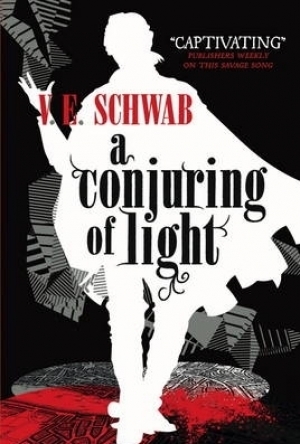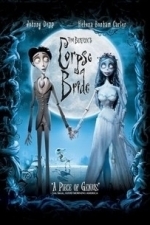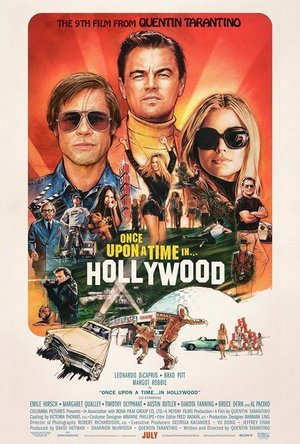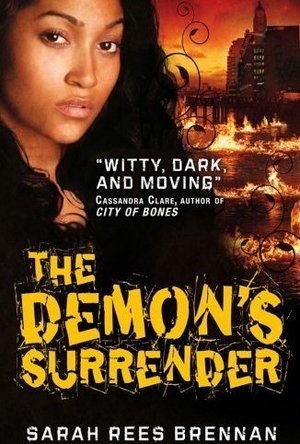Search
Search results
Dana (24 KP) rated A Conjuring of Light in Books
Mar 23, 2018
I tried to take my time with this book. I only listened to it for short amounts of time because I knew it was the last one and I wanted to take my time with it. Well, that and I was busy with Christmas stuff, so I guess I had to spend time with family.
So, onto the review. By the way, this is not spoiler free for the series or this book, so read at your own peril.
This book absolutely wrecked me. So we started off not knowing the status of Kell and therefore Rhys because they are freaking bound together via magical tattoos, so yeah, stressful. Then we have to know what is going on with Lila because how is she going to react to the information that Kell is possibly dying? I wasn't so sure. But damn am I glad she wanted to act. Then we have the knowledge that Holland is being taken over by Oseran because why not? Let's just have this piece of sentient magic take over an Antari's body to be able to take over worlds. Yes, plural. How could I not be okay with that? And that is all just from where we left off at the end of the last book, okay? I was a wreck when I started the book.
Alright, so onto Kell. He is so self sacrificing it kills me. Well, it nearly kills him and Rhys too, but that's beside the point. He, first, finds himself without magic, needing Delilah to come and save him. Then he is ostracized again from the court because obviously this is all his fault, right? Wrong. After that, he has to go on a mission with two people he hates as well as the woman he loves and a few strangers to boot. Not too bad so far. In order to save the woman he loves and (hopefully) protect her from harm, he is willing to do whatever, that means dying, to keep her alive and with magic. But he claims it's because he is able to control it better. Yeah, Kell. That's the reason. I can smell bullshit all the way over here, buddy. But really, even though he has a hard time staying alive and keeping out of trouble, I love Kell. He knows what is best for those he loves and will not hesitate to do it. He wants to travel the world, to get to see more than just London on any of the plains. And he gets to in the end. Plus, who doesn't want a person like Kell in their lives?
Now onto my girl Delilah. Hey there Delilah what's it like in Red London, are you trying to get yourself killed just to prove a point to Kell and Rhys? I would like to know why. (Sing that in the tune of the Plain White Tee's song, and you'll be golden.) But really. This girl has almost as much of a death wish as Kell does, swinging head first into danger without a plan most of the time. She is impulsive, rash, and strong as hell. And I wouldn't have her any other way. She hasn't known these people for very long, but she cares for them so deeply. She is also willing to give up everything to go up against Oseran, becasue why not? She thinks her unfiltered and untrained power can do a lot of damage. Which, yes it can, but not necessarily to your opponent, dear. I am proud of this scrappy little nobody. She became the badass pirate queen she has always needed to be. Plus, I like that she used her cunning and her knowledge as a thief to get the item they needed from the floating black market. So cool. Oh! And when she was battling Oseran and she freaking moved the river. Yeah girl! Prove Allucard wrong! Use that freaking ANTARI magic that you have. Get that black glass eye and become your true self!
Rhys is amazing. I honestly thought his father was going to do a spell to give Rhys his power when the King went out to fave Oseran in his palace, but I am glad he didn't. We need to see that even people without powers are powerful in their own right. He is a king, a commander, a force to be reckoned with, not in spite of his lack of magic, but because of it. He was able to train himself in the ways of people. He doesn't need magic to control, he's got words for that. What happened to his family, and almost happened to him, was heart breaking. I hate that he didn't really have time to mourn. I hate that he had to see his mother die in front of him. I hate that he didn't get to get revenge personally. But I know it would have hurt him as a character too much to have to kill those who betrayed the crown.
Allucard is still a hero in my eyes. He put up with so much shit from his family, and then Kell. I mean, the man paid for a magical mirror to be able to show Rhys the truth about why he left. HE JUST DESERVES TO BE HAPPY OKAY!!! I am glad that he and Rhys get to be together forever because they are in love and I love that love. Also, we got to see him use his magic so much more in this book. I feel like he got to earn his title as the winner of the Essen Tash. (I think that's how you spell it, I can't remember, okay). So, yeah, Allucard for life.
I don't know how she did it, but Ms Victoria Schwab made me like Holland. I just invested my hatred for this guy for two freaking books. TWO BOOKS!! And now I like him? What is this madness. But really, I loved that he was able to redeem himself and his actions. He just wanted to save his world and give it magic again. I like that he was able to use the device and save the day, even though he had to lose his power because of it. He is just, if not more so, self sacrificing as Kell and Lila are put together. He tries to die for the cause at least twice in this book. Also, I love that he becomes the King that is promised in White London. He brings back magic by giving up his. Just so beautiful.
All of the side characters were really interesting as well. I would love to see more into them if Ms Schwab has any plans to do so. As you can tell, I don't want to talk too much about Oseran because I don't like him. I will say, though, that Ms Schwab did a fantastic job creating such a vile creature. He brought a lot to the story and, even though I didn't like the character, it was more on a personal level than the writing of the character. I just didn't like the villain. But I loved how she wrote him. (I hope at least some of that makes sense)
This series was phenomenal. Every page was an adventure and I was so happy to be dragged along. Thank you for writing this book. I can't wait to see what's next.
So, onto the review. By the way, this is not spoiler free for the series or this book, so read at your own peril.
This book absolutely wrecked me. So we started off not knowing the status of Kell and therefore Rhys because they are freaking bound together via magical tattoos, so yeah, stressful. Then we have to know what is going on with Lila because how is she going to react to the information that Kell is possibly dying? I wasn't so sure. But damn am I glad she wanted to act. Then we have the knowledge that Holland is being taken over by Oseran because why not? Let's just have this piece of sentient magic take over an Antari's body to be able to take over worlds. Yes, plural. How could I not be okay with that? And that is all just from where we left off at the end of the last book, okay? I was a wreck when I started the book.
Alright, so onto Kell. He is so self sacrificing it kills me. Well, it nearly kills him and Rhys too, but that's beside the point. He, first, finds himself without magic, needing Delilah to come and save him. Then he is ostracized again from the court because obviously this is all his fault, right? Wrong. After that, he has to go on a mission with two people he hates as well as the woman he loves and a few strangers to boot. Not too bad so far. In order to save the woman he loves and (hopefully) protect her from harm, he is willing to do whatever, that means dying, to keep her alive and with magic. But he claims it's because he is able to control it better. Yeah, Kell. That's the reason. I can smell bullshit all the way over here, buddy. But really, even though he has a hard time staying alive and keeping out of trouble, I love Kell. He knows what is best for those he loves and will not hesitate to do it. He wants to travel the world, to get to see more than just London on any of the plains. And he gets to in the end. Plus, who doesn't want a person like Kell in their lives?
Now onto my girl Delilah. Hey there Delilah what's it like in Red London, are you trying to get yourself killed just to prove a point to Kell and Rhys? I would like to know why. (Sing that in the tune of the Plain White Tee's song, and you'll be golden.) But really. This girl has almost as much of a death wish as Kell does, swinging head first into danger without a plan most of the time. She is impulsive, rash, and strong as hell. And I wouldn't have her any other way. She hasn't known these people for very long, but she cares for them so deeply. She is also willing to give up everything to go up against Oseran, becasue why not? She thinks her unfiltered and untrained power can do a lot of damage. Which, yes it can, but not necessarily to your opponent, dear. I am proud of this scrappy little nobody. She became the badass pirate queen she has always needed to be. Plus, I like that she used her cunning and her knowledge as a thief to get the item they needed from the floating black market. So cool. Oh! And when she was battling Oseran and she freaking moved the river. Yeah girl! Prove Allucard wrong! Use that freaking ANTARI magic that you have. Get that black glass eye and become your true self!
Rhys is amazing. I honestly thought his father was going to do a spell to give Rhys his power when the King went out to fave Oseran in his palace, but I am glad he didn't. We need to see that even people without powers are powerful in their own right. He is a king, a commander, a force to be reckoned with, not in spite of his lack of magic, but because of it. He was able to train himself in the ways of people. He doesn't need magic to control, he's got words for that. What happened to his family, and almost happened to him, was heart breaking. I hate that he didn't really have time to mourn. I hate that he had to see his mother die in front of him. I hate that he didn't get to get revenge personally. But I know it would have hurt him as a character too much to have to kill those who betrayed the crown.
Allucard is still a hero in my eyes. He put up with so much shit from his family, and then Kell. I mean, the man paid for a magical mirror to be able to show Rhys the truth about why he left. HE JUST DESERVES TO BE HAPPY OKAY!!! I am glad that he and Rhys get to be together forever because they are in love and I love that love. Also, we got to see him use his magic so much more in this book. I feel like he got to earn his title as the winner of the Essen Tash. (I think that's how you spell it, I can't remember, okay). So, yeah, Allucard for life.
I don't know how she did it, but Ms Victoria Schwab made me like Holland. I just invested my hatred for this guy for two freaking books. TWO BOOKS!! And now I like him? What is this madness. But really, I loved that he was able to redeem himself and his actions. He just wanted to save his world and give it magic again. I like that he was able to use the device and save the day, even though he had to lose his power because of it. He is just, if not more so, self sacrificing as Kell and Lila are put together. He tries to die for the cause at least twice in this book. Also, I love that he becomes the King that is promised in White London. He brings back magic by giving up his. Just so beautiful.
All of the side characters were really interesting as well. I would love to see more into them if Ms Schwab has any plans to do so. As you can tell, I don't want to talk too much about Oseran because I don't like him. I will say, though, that Ms Schwab did a fantastic job creating such a vile creature. He brought a lot to the story and, even though I didn't like the character, it was more on a personal level than the writing of the character. I just didn't like the villain. But I loved how she wrote him. (I hope at least some of that makes sense)
This series was phenomenal. Every page was an adventure and I was so happy to be dragged along. Thank you for writing this book. I can't wait to see what's next.
Ronyell (38 KP) rated Tim Burton's Corpse Bride (2005) in Movies
Jul 24, 2020
Boy Meets Dead Girl
When a young man named Victor Van Dort is engaged to a young woman named Victoria Everglot (Victor, Victoria, get it?) due to Victor's family, the Van Dorts wanting to get Victor to marry Victoria because they want to be in high society; while Victoria's parents, the Everglots, want Victoria to marry Victor in order to get more money from the Van Dorts, Victor ends up messing up his wedding rehearsals to Victoria and ends up going into the woods to practice his wedding vows. Unfortunately, Victor accidentally places his wedding ring on a bony finger that was embedded in the ground and he ends up being engaged to Emily, the Corpse Bride. Meanwhile, in the living world, a sly and diabolical gentlemen named Lord Barkis Bittern wants to take Victoria's hand in marriage in case Victor does not come back to the living world.
Can Victor get back to the world of the living and who will he choose: Victoria or Emily?
I have been watching many of Tim Burton's animated films and "Corpse Bride" happens to be one of his most ingenious works yet! I loved the fact that this movie was based off an ancient folktale about a man accidentally marrying a corpse as I love reading about folktales in general and this movie definitely has the ancient folktale feel to it. I also enjoyed seeing the two different worlds between the living world and the world of the dead as they contrast each other in a very unique way. In this case, the world of the living is seen as a dreary black and white world while the world of the dead is shown in a loud and colorful manner, which is surprising since you would expect to see the world of the dead as a dreary place while the world of the living is a colorful place. I also enjoyed the relationship shared between Victor and Emily, even though Victor at first didn't want to be in the world of the dead. Even though the idea of even communicating with a talking corpse is horrifying at best, this film managed to make the interactions between Emily and Victor be as charming as can be and I was able to really enjoy their innocent bantering with each other! I really loved the way that each voice actor portrayed the characters as they made them come to life, especially with the performance of Johnny Depp as Victor as he made Victor sound timid yet friendly at the same time. I really loved Helena Bonham Carter's performance as Emily the Corpse Bride as she was probably the most interesting character in the entire movie and I loved the way that Emily is so innocent and yet can be pretty frightening when she wants to be!
The only issue I had with this film was that I felt that the songs in this movie were not as memorable as "The Nightmare Before Christmas" and they didn't really get me to feel so much for the characters' situations since they weren't catchy or emotional enough. I also wished that the movie actually explored the characters a bit more like explain how Victoria's family got into financial troubles in the first place and what was Lord Barkis Bittern like as a character before he is introduced into this film.
Overall, "Corpse Bride" is a great film for anyone who is a huge fan of Tim Burton's dark comedy films and who loves watching films starring dead characters in general!
Originally posted on: http://surrealmoviesandtvblog.blogspot.com/2014/10/movie-review-corpse-bride-2005.html
Can Victor get back to the world of the living and who will he choose: Victoria or Emily?
I have been watching many of Tim Burton's animated films and "Corpse Bride" happens to be one of his most ingenious works yet! I loved the fact that this movie was based off an ancient folktale about a man accidentally marrying a corpse as I love reading about folktales in general and this movie definitely has the ancient folktale feel to it. I also enjoyed seeing the two different worlds between the living world and the world of the dead as they contrast each other in a very unique way. In this case, the world of the living is seen as a dreary black and white world while the world of the dead is shown in a loud and colorful manner, which is surprising since you would expect to see the world of the dead as a dreary place while the world of the living is a colorful place. I also enjoyed the relationship shared between Victor and Emily, even though Victor at first didn't want to be in the world of the dead. Even though the idea of even communicating with a talking corpse is horrifying at best, this film managed to make the interactions between Emily and Victor be as charming as can be and I was able to really enjoy their innocent bantering with each other! I really loved the way that each voice actor portrayed the characters as they made them come to life, especially with the performance of Johnny Depp as Victor as he made Victor sound timid yet friendly at the same time. I really loved Helena Bonham Carter's performance as Emily the Corpse Bride as she was probably the most interesting character in the entire movie and I loved the way that Emily is so innocent and yet can be pretty frightening when she wants to be!
The only issue I had with this film was that I felt that the songs in this movie were not as memorable as "The Nightmare Before Christmas" and they didn't really get me to feel so much for the characters' situations since they weren't catchy or emotional enough. I also wished that the movie actually explored the characters a bit more like explain how Victoria's family got into financial troubles in the first place and what was Lord Barkis Bittern like as a character before he is introduced into this film.
Overall, "Corpse Bride" is a great film for anyone who is a huge fan of Tim Burton's dark comedy films and who loves watching films starring dead characters in general!
Originally posted on: http://surrealmoviesandtvblog.blogspot.com/2014/10/movie-review-corpse-bride-2005.html
Lee Ronaldo recommended Blind Joe Death by John Fahey in Music (curated)
Bong Mines Entertainment (15 KP) rated Eargasms for Short-Sighted Post-Truth Era People by Helsinki Headnod Convention in Music
Jun 7, 2019
Helsinki Headnod Convention is a Jazz/Spoken Word band. Not too long ago, they released their debut EP, entitled, “Eargasms for Short-Sighted Post-Truth Era People”.
WHO’S MAKING YOU?
Mellow and subtle. This jazzy tune poses a series of interesting questions.
At the end of the day, it’s you and only you. You keep trying to place the blame on somebody else but it’s you. Also, you and only you are can make you or break you.
OUR TIME IS NOW
This 30 seconds clip tells listeners that their time is now. Also, it’s short, representing that time is short on earth and it shouldn’t be taken for granted.
SORROW AND PAIN
A mixture of Negro Spiritual mixed with Blues and elements of ‘60s Soul.
The black and white video shows an African-American woman walking in the evening. Also, a vehicle with its headlights on approaches and a Caucasian cop parks it.
The following scene shows the woman running away while the cop, dressed as a terrorist, is chasing her with a lit smoke screen in his hand.
The courageous woman falls to the ground, grabs a handful of snow, and throws it in her attacker’s face. Momentarily, it blinds him and she gets up and runs away.
But she can’t see where she’s going because of the smoke. Then, she’s confronted by another Caucasian man, dressed in riot gear. Also, he’s walking towards her while her other attacker is gaining ground behind her.
In the end, while snow is falling and visibility is blurry, the rioter beats the woman with the stick in his hand.
The suggestive video implies that those who are supposed to protect and serve urban communities contain an uncertain amount of national terrorists within their organizations.
Also, some things from the past have changed, but on the other hand, some things have remained the same.
SOLIDARITY
Mellow and smooth. One minute and 13 seconds of conscious therapy, which begins with a calming voice, “We glorify war when we should glorify peace.”
The title is a unity campaign that binds people together as one. Also, its aim is social change within a racist power structure.
DOWN ON BENDED KNEE
The poem is based on Colin Kaepernick’s epic gesture of bending his knee during the National Anthem to protest social injustices happening in urban communities. Also, it speaks on reasons humanity, equality, civility, decency, justice, and other rights.
ANOTHER DAY IN PARADISE
An instrument plays in solitude against a vacant backdrop, where paradise is imagined as an ordinary day in hell, where being cautious is the best way to proceed.
Also, a story is told about a woman who is begging on the street, but the man she is seeking help from doesn’t even acknowledge her.
She calls out to a man on the street, “Sir, can you help me. It’s cold and I have nowhere to sleep. Is there somewhere you can tell me?”
He walks on doesn’t look back. He pretends he can’t hear her. Starts to whistle as he crosses the street. Seems embarrassed to be there.
This story paints a perfect picture of people frowning down on the have-nots, who oftentimes get overlooked while seeking monetary help or begging for information in public.
THE BIGGER PICTURE
With so many points of views to look from, what’s really the bigger picture?
The artist raps, “Watch me step it up. Cape blowing in the wind standing tough. Can’t give up.”
The song implies what’s necessary to see the bigger picture. One must have the courage to not get blown away by the world-wind and its influences.
Also, it implies taking a step up, by elevating your mind, body, and soul. Only then, will you be able to see the bigger picture, which is quite an exquisite view?
HUMAN KINDNESS
Beings with a jazzy fiesta of affectionate sounds perfumed with love. It depicts the hustle and bustle of an inner-city boulevard. It’s fast-paced and warm like the blood flowing in our veins.
CONCLUSION
“Eargasms for Short-Sighted Post-Truth Era People” is an undiluted audible ear drop solution, perfumed with nostalgia. It’s revolutionary but its non-violence approach in combating social inequality is highly effective.
https://www.bongminesentertainment.com/helsinki-headnod-eargasms/
WHO’S MAKING YOU?
Mellow and subtle. This jazzy tune poses a series of interesting questions.
At the end of the day, it’s you and only you. You keep trying to place the blame on somebody else but it’s you. Also, you and only you are can make you or break you.
OUR TIME IS NOW
This 30 seconds clip tells listeners that their time is now. Also, it’s short, representing that time is short on earth and it shouldn’t be taken for granted.
SORROW AND PAIN
A mixture of Negro Spiritual mixed with Blues and elements of ‘60s Soul.
The black and white video shows an African-American woman walking in the evening. Also, a vehicle with its headlights on approaches and a Caucasian cop parks it.
The following scene shows the woman running away while the cop, dressed as a terrorist, is chasing her with a lit smoke screen in his hand.
The courageous woman falls to the ground, grabs a handful of snow, and throws it in her attacker’s face. Momentarily, it blinds him and she gets up and runs away.
But she can’t see where she’s going because of the smoke. Then, she’s confronted by another Caucasian man, dressed in riot gear. Also, he’s walking towards her while her other attacker is gaining ground behind her.
In the end, while snow is falling and visibility is blurry, the rioter beats the woman with the stick in his hand.
The suggestive video implies that those who are supposed to protect and serve urban communities contain an uncertain amount of national terrorists within their organizations.
Also, some things from the past have changed, but on the other hand, some things have remained the same.
SOLIDARITY
Mellow and smooth. One minute and 13 seconds of conscious therapy, which begins with a calming voice, “We glorify war when we should glorify peace.”
The title is a unity campaign that binds people together as one. Also, its aim is social change within a racist power structure.
DOWN ON BENDED KNEE
The poem is based on Colin Kaepernick’s epic gesture of bending his knee during the National Anthem to protest social injustices happening in urban communities. Also, it speaks on reasons humanity, equality, civility, decency, justice, and other rights.
ANOTHER DAY IN PARADISE
An instrument plays in solitude against a vacant backdrop, where paradise is imagined as an ordinary day in hell, where being cautious is the best way to proceed.
Also, a story is told about a woman who is begging on the street, but the man she is seeking help from doesn’t even acknowledge her.
She calls out to a man on the street, “Sir, can you help me. It’s cold and I have nowhere to sleep. Is there somewhere you can tell me?”
He walks on doesn’t look back. He pretends he can’t hear her. Starts to whistle as he crosses the street. Seems embarrassed to be there.
This story paints a perfect picture of people frowning down on the have-nots, who oftentimes get overlooked while seeking monetary help or begging for information in public.
THE BIGGER PICTURE
With so many points of views to look from, what’s really the bigger picture?
The artist raps, “Watch me step it up. Cape blowing in the wind standing tough. Can’t give up.”
The song implies what’s necessary to see the bigger picture. One must have the courage to not get blown away by the world-wind and its influences.
Also, it implies taking a step up, by elevating your mind, body, and soul. Only then, will you be able to see the bigger picture, which is quite an exquisite view?
HUMAN KINDNESS
Beings with a jazzy fiesta of affectionate sounds perfumed with love. It depicts the hustle and bustle of an inner-city boulevard. It’s fast-paced and warm like the blood flowing in our veins.
CONCLUSION
“Eargasms for Short-Sighted Post-Truth Era People” is an undiluted audible ear drop solution, perfumed with nostalgia. It’s revolutionary but its non-violence approach in combating social inequality is highly effective.
https://www.bongminesentertainment.com/helsinki-headnod-eargasms/
Gareth von Kallenbach (980 KP) rated Once Upon a Time in Hollywood (2019) in Movies
Jul 25, 2019
Director Quentin Tarantino is well known for his language and excessive violence-based movies. All one needs to do is look at some of his earlier works such as Reservoir Dogs or Pulp Fiction to really get an understanding of how over-the-top they really can be. So, when I saw the initial previews for his latest dramatic comedy Once Upon a Time in Hollywood, I wasn’t sure what to expect. This only fueled the expectation and interest I had going into the film.
Once Upon a Time in Hollywood takes place in 1969 near the end of the golden age of Hollywood. Rick Dalton (Leonardo DiCaprio) is an aging star of Westerns trying to desperately remain relevant in a world that considers those even in their 30’s as ancient, much like the black and white film common even to that day. His stuntman and best friend Cliff Booth (Brad Pitt) is happy to go along for the ride. More of an assistant and better known as the man who got away with killing his own wife, Cliff is content with his role in the world and isn’t looking for the next big break.
You can’t have a Hollywood story in 1969 without involving one of the most brutal murders of the time, that of Sharon Tate (Margot Robbie) and the now infamous Charles Manson and his “family”. A dark cloud that would leave a lasting mark on Hollywood itself. Their presence reminds us of the chilling reality to the evil that is lurking just outside the amazing set pieces and bright lights of the city itself.
Brad Pitt and Leonardo DiCaprio do a phenomenal job as one would expect. It’s always interesting to watch a movie where the actor is portraying another character in an entirely different movie and Leonardo delivers in spades. Brad Pitt brings his usual lovable charm to the otherwise tough persona as Cliff, the dog loving, Bruce Lee ass kicking sidekick. The chemistry between the two is undeniable, displaying both touching and comedic undertones throughout. It’s almost surreal to think that they are portraying characters that do represent themselves in the real world. It’s hard not to make the comparison of Brad and Leo to their onscreen characters, as aging stars wondering what the future holds for them.
Tarantino does a marvelous job of transporting his viewers back to 1969. Everything from episodes of old television shows, to advertisements on the street envelop the viewers in the tie-dyed/hippy reality of what the 60’s was. It’s hard not to be impressed with the cinematography that has been so lavishly recreated before us. The streets, the cars, even the film itself all take their cues from the time period. Car scenes are shot with laughably fake backdrops at times to remind us exactly the types of effects that went into filming back in the day. It’s a mix of old school and new school filming that takes you from one reality and places you in another. Tarantino does his best to make the audience more than spectators to what is developing on screen and instead as active participants.
Once Upon a Time in Hollywood is a fairytale of sorts, of what made Hollywood so special back in the 60’s. It lacks much of the brutal nature that has become second nature to Tarantino films, and those who are going to see it for its brutality will likely be very disappointed. It’s a film that is incredibly difficult to talk about without spoilers, because outside the general plot synopsis the viewer is left with more questions than answers. The film is long, coming in at two hours and forty minutes, and there are scenes that tend to drag on a little longer than necessary. Thankfully though, Tarantino has weaved a story of what was and what could have been, if Rick and Cliff both had existed…Once Upon a Time in Hollywood.
4 out of 5 stars
Once Upon a Time in Hollywood takes place in 1969 near the end of the golden age of Hollywood. Rick Dalton (Leonardo DiCaprio) is an aging star of Westerns trying to desperately remain relevant in a world that considers those even in their 30’s as ancient, much like the black and white film common even to that day. His stuntman and best friend Cliff Booth (Brad Pitt) is happy to go along for the ride. More of an assistant and better known as the man who got away with killing his own wife, Cliff is content with his role in the world and isn’t looking for the next big break.
You can’t have a Hollywood story in 1969 without involving one of the most brutal murders of the time, that of Sharon Tate (Margot Robbie) and the now infamous Charles Manson and his “family”. A dark cloud that would leave a lasting mark on Hollywood itself. Their presence reminds us of the chilling reality to the evil that is lurking just outside the amazing set pieces and bright lights of the city itself.
Brad Pitt and Leonardo DiCaprio do a phenomenal job as one would expect. It’s always interesting to watch a movie where the actor is portraying another character in an entirely different movie and Leonardo delivers in spades. Brad Pitt brings his usual lovable charm to the otherwise tough persona as Cliff, the dog loving, Bruce Lee ass kicking sidekick. The chemistry between the two is undeniable, displaying both touching and comedic undertones throughout. It’s almost surreal to think that they are portraying characters that do represent themselves in the real world. It’s hard not to make the comparison of Brad and Leo to their onscreen characters, as aging stars wondering what the future holds for them.
Tarantino does a marvelous job of transporting his viewers back to 1969. Everything from episodes of old television shows, to advertisements on the street envelop the viewers in the tie-dyed/hippy reality of what the 60’s was. It’s hard not to be impressed with the cinematography that has been so lavishly recreated before us. The streets, the cars, even the film itself all take their cues from the time period. Car scenes are shot with laughably fake backdrops at times to remind us exactly the types of effects that went into filming back in the day. It’s a mix of old school and new school filming that takes you from one reality and places you in another. Tarantino does his best to make the audience more than spectators to what is developing on screen and instead as active participants.
Once Upon a Time in Hollywood is a fairytale of sorts, of what made Hollywood so special back in the 60’s. It lacks much of the brutal nature that has become second nature to Tarantino films, and those who are going to see it for its brutality will likely be very disappointed. It’s a film that is incredibly difficult to talk about without spoilers, because outside the general plot synopsis the viewer is left with more questions than answers. The film is long, coming in at two hours and forty minutes, and there are scenes that tend to drag on a little longer than necessary. Thankfully though, Tarantino has weaved a story of what was and what could have been, if Rick and Cliff both had existed…Once Upon a Time in Hollywood.
4 out of 5 stars

bting English - Trading English
Catalogs and Business
App
Trading English is the language to adapt to working life requirements for the purpose of covering...
Mariafrancesca (30 KP) rated The Demon’s surrendee (Demon’s Lexicon #3) in Books
Apr 7, 2019
This is a review for the whole series
I read these books because a friend of mine suggested them and she enjoyed them very much. I really like Sarah Rees Brennan style, it is funny and engaging and I really couldn't put these books down. However the end of this trilogy makes me angry, there are so many problems with it that I don't know where to start. I apologise in advance for the mistakes in this review, I am not a native speaker so please be patient.
The Disney happy ending: I don't want to comment the fact that everyone gets paired off here, but what about the magicians? In this book the magicians are evil, they kill people, they are addicted to power, the lousy solution they found through Jamie it's not solid. What happens when Jamie dies? When Nick dies? It can last for 50-60 years, what then? This magicians are not vampires that can drink animal blood, they are addicts that need to kill people in order to have power, this solution is just temporary and I cannot see another way to make it happens afterwards, unless they start to sacrifice babies that is even worse. Moreover they unleash 2 demons on Earth (the most irresponsible and incoherent thing they can do after 3 books of saying how they are pure evil) and the only explanation we get is "winning a war comes with a price"
Diversity: the way diversity is treated in this book is ridiculous. She throws in some black or gay character, family problems, a past of abuses and then she uses them to makes the white rich kids shine. I will talk about Sin in a minute, but what about Seb? He could have been such a precious character instead you see him as bully, then as the magicians' pet, then he gets to date the boy he always loved in secret, after he bullied him for years, just because he's the only gay character still available
All that is wrong with Sin:
The Character: Sin is a strong teenage girl who had a tough life but she has always worked hard to achieve her goal: become the leader of a place that she loves deeply, understands deeply and where she spent her entire life. And when a tourist threats to get the position instead, she is the first to recognise that this girl who has been at the Goblin Market 4 times is better than her in everything. Sin doesn't simply fail, she surrenders to the fact that Mae's is better than her and she just let her have the Market. Sin, that should be the main character of the third book, stays a secondary character with no development other than getting rid of a stupid superstition about limping guys and getting a boyfriend.
Point of view: although I enjoyed Sin's POV far more than Mae's, I can't see the reason of this choice. The previous POV where of main characters who were actually living the situation and acting in the situation. In here Sin, instead of becoming a main character, spends more than half of the book overhearing conversations (with her supernatural hearing) and following Mae's plans. Again, it seems they wanted to show off about the diversity inside this book and instead it results in a joke. Alan's POV, or Jamie's, would have been so much better.
All that is wrong with Mae:
I am not a fan of Mae, I couldn't stand her form the beginning. I don't want to get started on this because I could talk about it for hours but to summarise my opinion, I think that author wanted to go for a character very much like Hermione but much more popular and cool. The problem is that Hermione, even though she is smart and talented, succeeds in everything she does because she works very hard to get there she sacrifice herself for a greater cause, and she has flow and doubts as every teenager. Mae succeeds in everything without any particular reason, she is just lucky and most of the time she doesn't deserve what she gets.
Last but not lest: COULD YOU EXPLAIN HOW ON EARTH A DEMON AND A HUMAN GIRL GET TOGETHER?????
The Disney happy ending: I don't want to comment the fact that everyone gets paired off here, but what about the magicians? In this book the magicians are evil, they kill people, they are addicted to power, the lousy solution they found through Jamie it's not solid. What happens when Jamie dies? When Nick dies? It can last for 50-60 years, what then? This magicians are not vampires that can drink animal blood, they are addicts that need to kill people in order to have power, this solution is just temporary and I cannot see another way to make it happens afterwards, unless they start to sacrifice babies that is even worse. Moreover they unleash 2 demons on Earth (the most irresponsible and incoherent thing they can do after 3 books of saying how they are pure evil) and the only explanation we get is "winning a war comes with a price"
Diversity: the way diversity is treated in this book is ridiculous. She throws in some black or gay character, family problems, a past of abuses and then she uses them to makes the white rich kids shine. I will talk about Sin in a minute, but what about Seb? He could have been such a precious character instead you see him as bully, then as the magicians' pet, then he gets to date the boy he always loved in secret, after he bullied him for years, just because he's the only gay character still available
All that is wrong with Sin:
The Character: Sin is a strong teenage girl who had a tough life but she has always worked hard to achieve her goal: become the leader of a place that she loves deeply, understands deeply and where she spent her entire life. And when a tourist threats to get the position instead, she is the first to recognise that this girl who has been at the Goblin Market 4 times is better than her in everything. Sin doesn't simply fail, she surrenders to the fact that Mae's is better than her and she just let her have the Market. Sin, that should be the main character of the third book, stays a secondary character with no development other than getting rid of a stupid superstition about limping guys and getting a boyfriend.
Point of view: although I enjoyed Sin's POV far more than Mae's, I can't see the reason of this choice. The previous POV where of main characters who were actually living the situation and acting in the situation. In here Sin, instead of becoming a main character, spends more than half of the book overhearing conversations (with her supernatural hearing) and following Mae's plans. Again, it seems they wanted to show off about the diversity inside this book and instead it results in a joke. Alan's POV, or Jamie's, would have been so much better.
All that is wrong with Mae:
I am not a fan of Mae, I couldn't stand her form the beginning. I don't want to get started on this because I could talk about it for hours but to summarise my opinion, I think that author wanted to go for a character very much like Hermione but much more popular and cool. The problem is that Hermione, even though she is smart and talented, succeeds in everything she does because she works very hard to get there she sacrifice herself for a greater cause, and she has flow and doubts as every teenager. Mae succeeds in everything without any particular reason, she is just lucky and most of the time she doesn't deserve what she gets.
Last but not lest: COULD YOU EXPLAIN HOW ON EARTH A DEMON AND A HUMAN GIRL GET TOGETHER?????








